Fixing loose floorboards
Fixing any loose floorboards is a necessity for any floor – whether the floorboards are going to be the finished floor in your home, or, they are to be the base for a new floor covering (subfloor), in all cases it is important to make sure they are fixed down properly. Screws are normally used if the floor is not going to be exposed, whereas if the boards are on show, lost head nails are a good option. For an older floor where character is important, you may choose to use traditional cut nails.
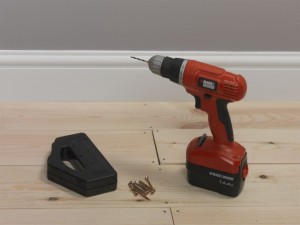 |
1. Use a cable, pipe and stud detector to help check for safe fixing positions. |
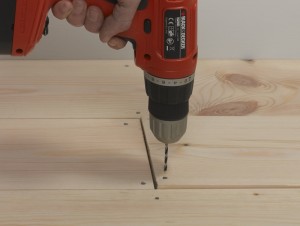 |
2. When you are sure that there are no services below the boards, drill a pilot hole on one side of the loose board, through into the joist below. |
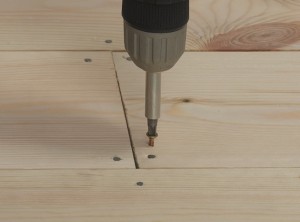 |
3. With the right length of screw to go through the board and into the joist, screw the board down securely until it is flush with the adjacent board. |
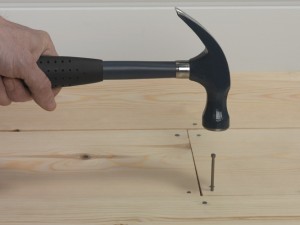 |
4. If the board is to be left exposed, use nails to hold the board down. As with the screw, ensure the nail is long enough to go through to the joist. |
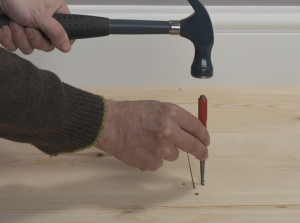 |
5. Use a nail punch to knock the nail head below the surface and repeat, if necessary, on the other side of the board. |
Repairing floorboards tips
- If you do not drill pilot holes for fixings it is more than likely you will split the board. Choose a bit that it is lightly narrower than the diameter of the screw or nail.
- If you are not using self-countersinking screws, it is a good idea to use a countersink bit before inserting the screw to ensure that the screw head sits below surface level.
- Where a floorboard is split or in too bad a condition to fix down, cut a new board to replace it. Sometimes it is not possible to buy replacement boards of exactly the same size. If the closest size of board you can find is too wide, you can simply trim the width down with a plane. For depth requirements, if you cannot get exactly the same depth, then opt for something slightly shallower as you can always use wedges under the board to bring it up to the surrounding floor level. If you buy a new board that is too deep, then you need some more specialist woodworking equipment (thicknesser) to trim it down to size.
